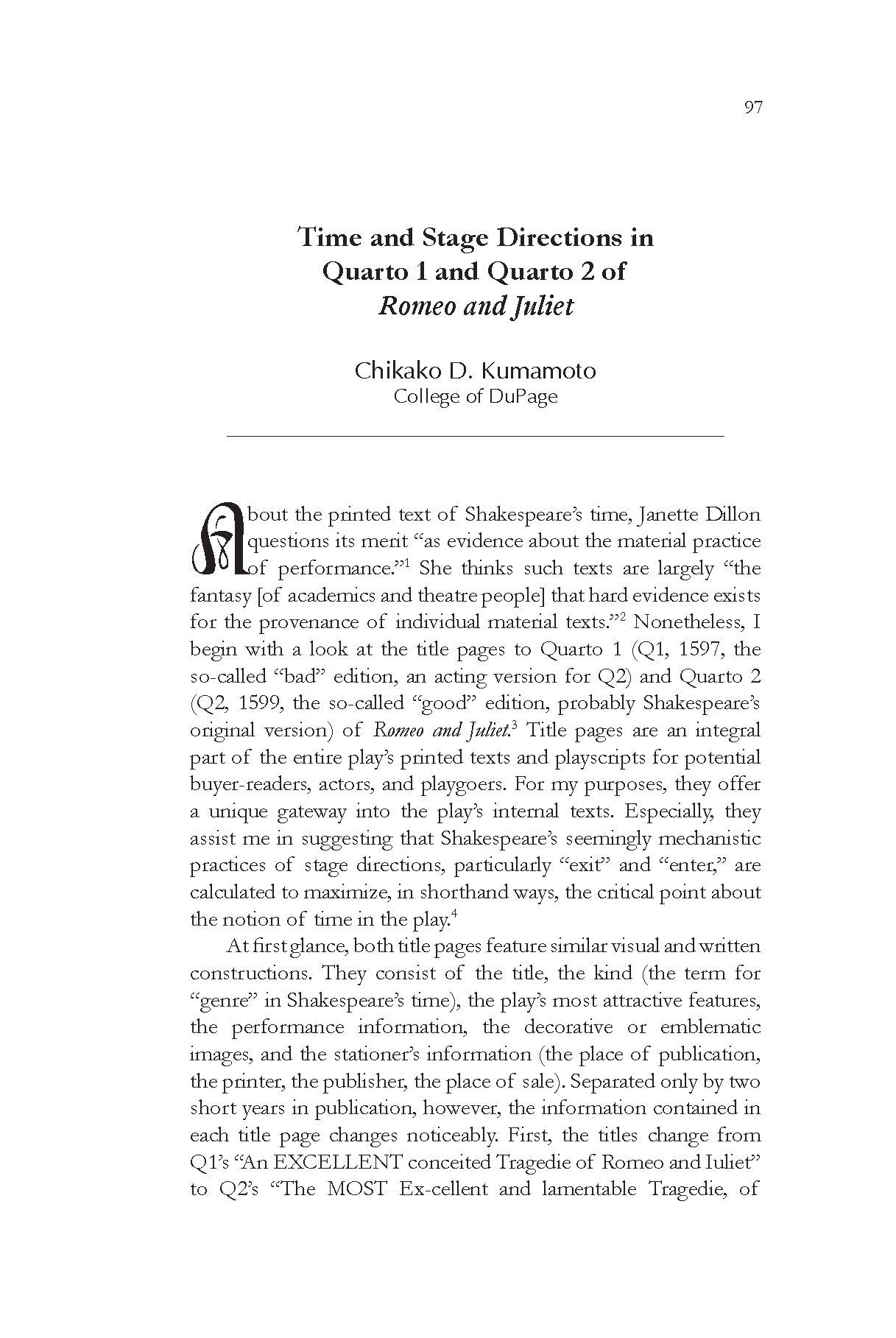Time and Stage Directions in Quarto 1 and Quarto 2 of Romeo and Juliet
Main Article Content
Abstract
About the printed text of Shakespeare’s time, Janette Dillon questions its merit “as evidence about the material practice of performance.”1 She thinks such texts are largely “the fantasy [of academics and theatre people] that hard evidence exists for the provenance of individual material texts.”2 Nonetheless, I begin with a look at the title pages to Quarto 1 (Q1, 1597, the so-called “bad” edition, an acting version for Q2) and Quarto 2 (Q2, 1599, the so-called “good” edition, probably Shakespeare’s original version) of Romeo and Juliet.3 Title pages are an integral part of the entire play’s printed texts and playscripts for potential buyer-readers, actors, and playgoers. For my purposes, they offer a unique gateway into the play’s internal texts. Especially, they assist me in suggesting that Shakespeare’s seemingly mechanistic practices of stage directions, particularly “exit” and “enter,” are calculated to maximize, in shorthand ways, the critical point about the notion of time in the play.4
